

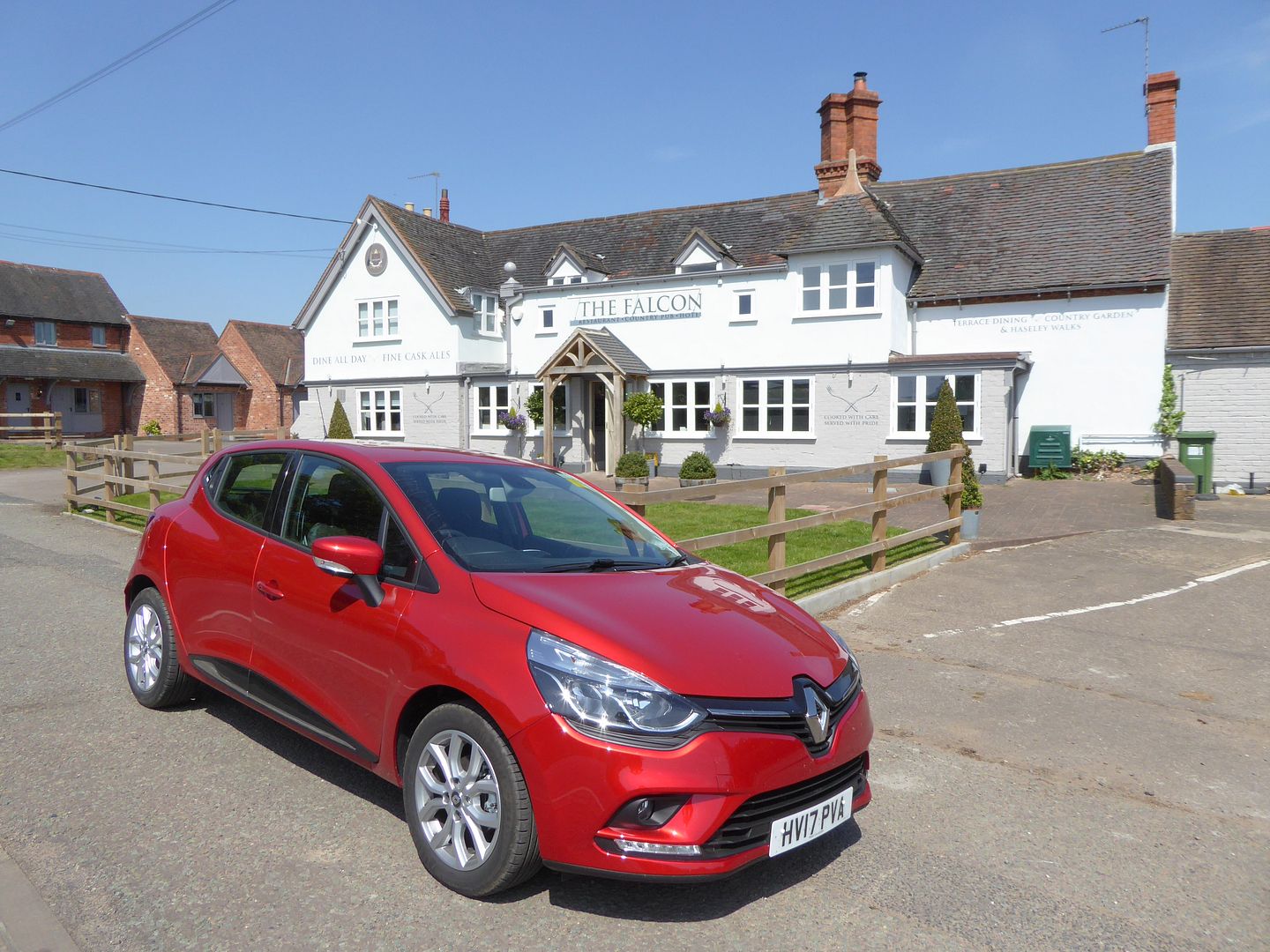












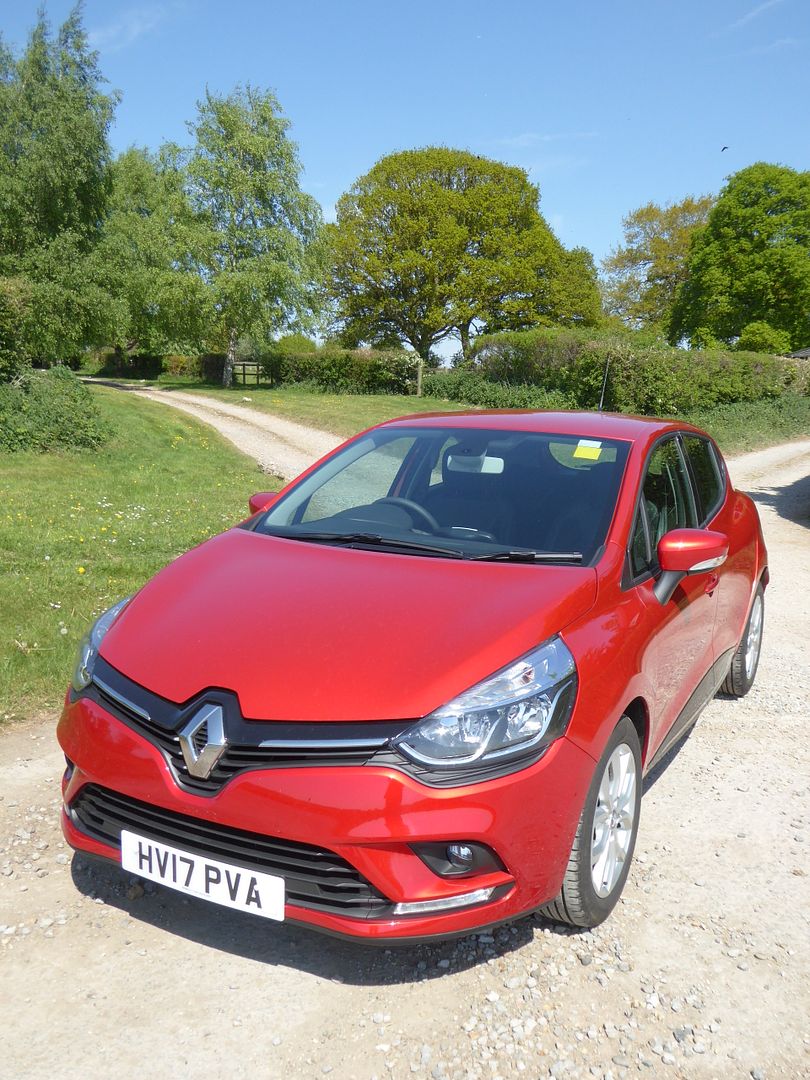


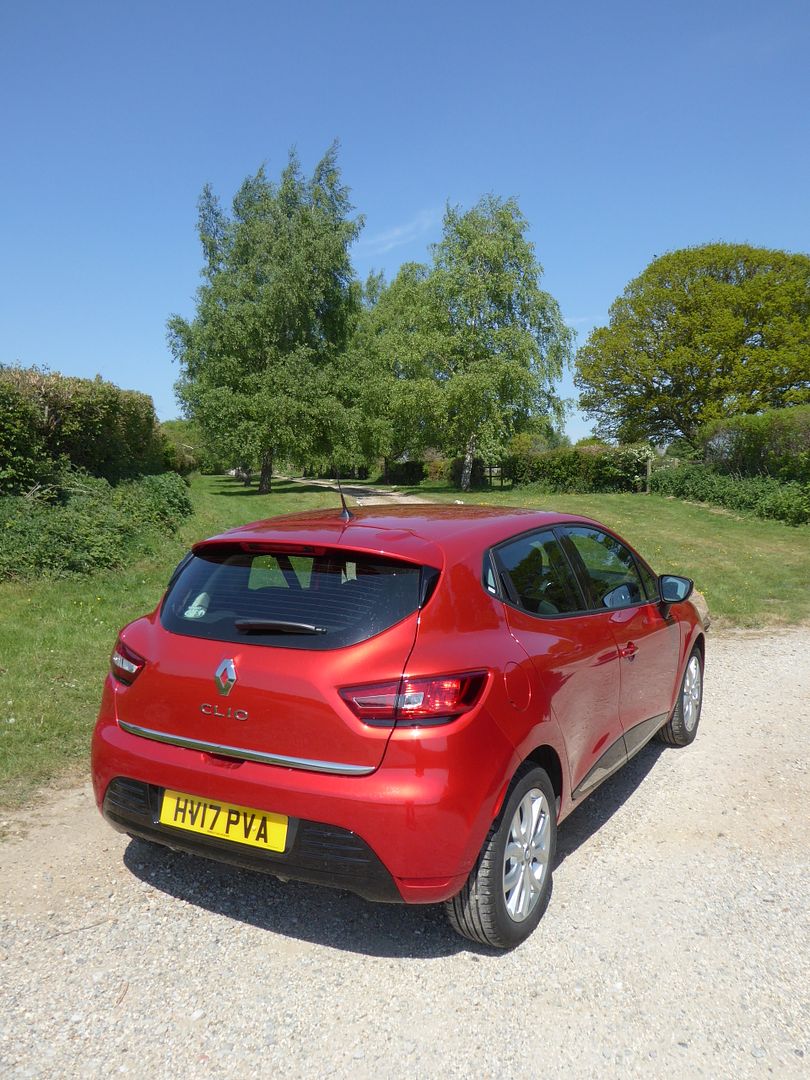







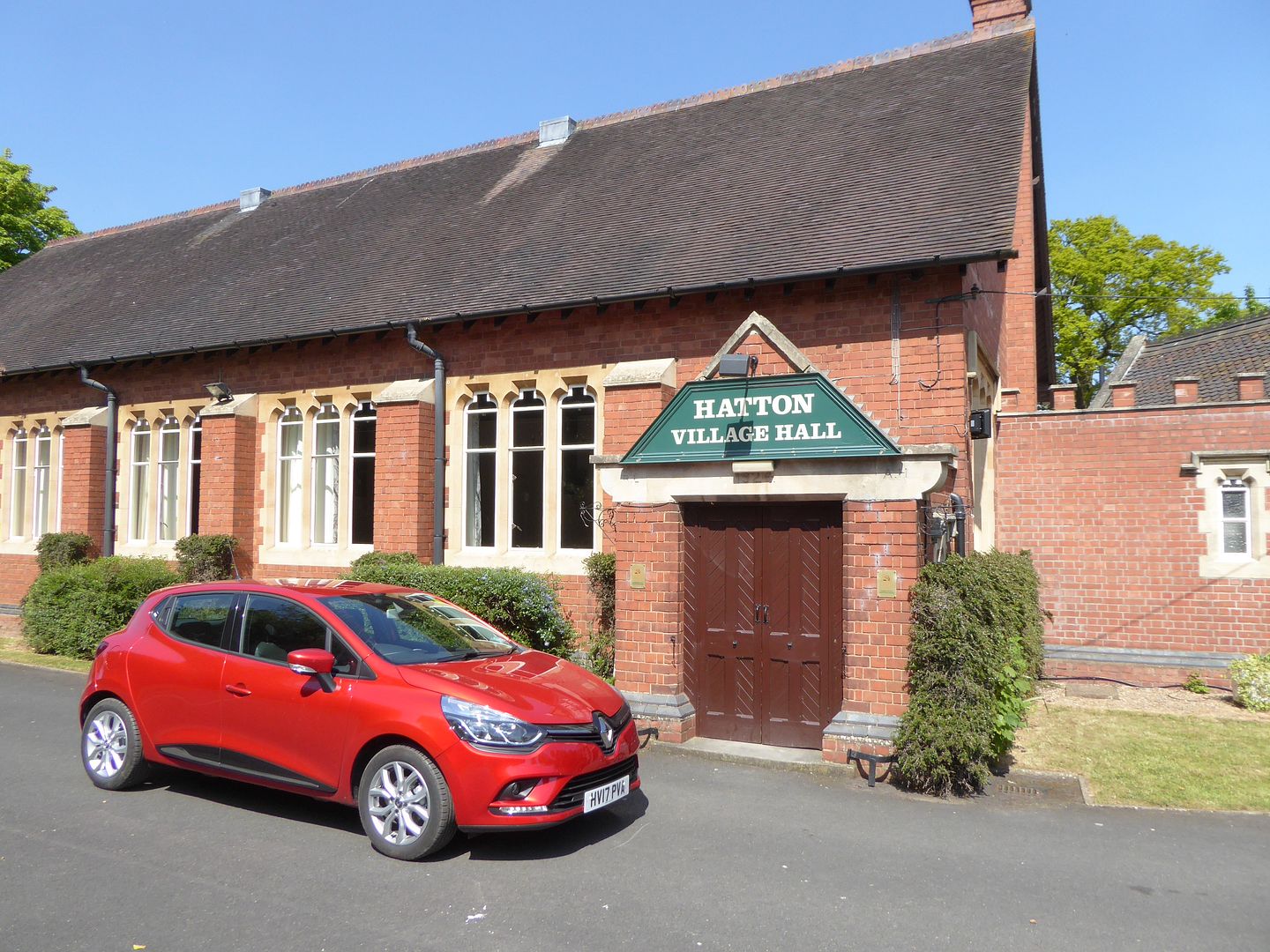



































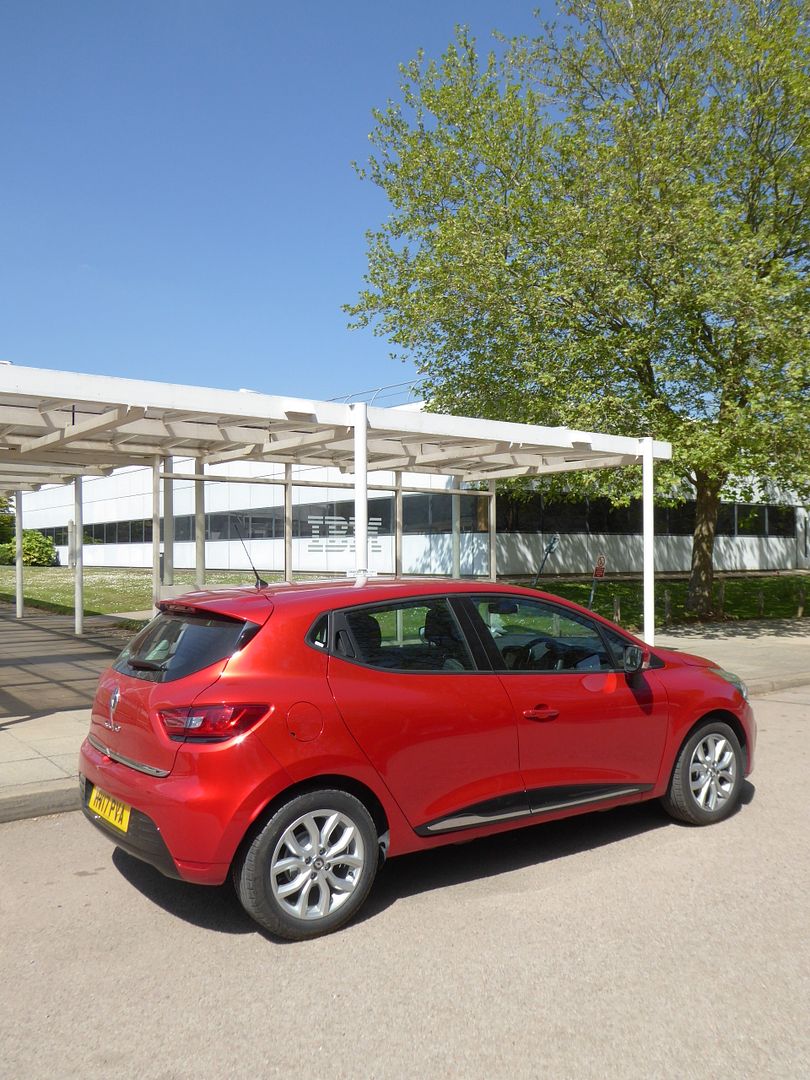




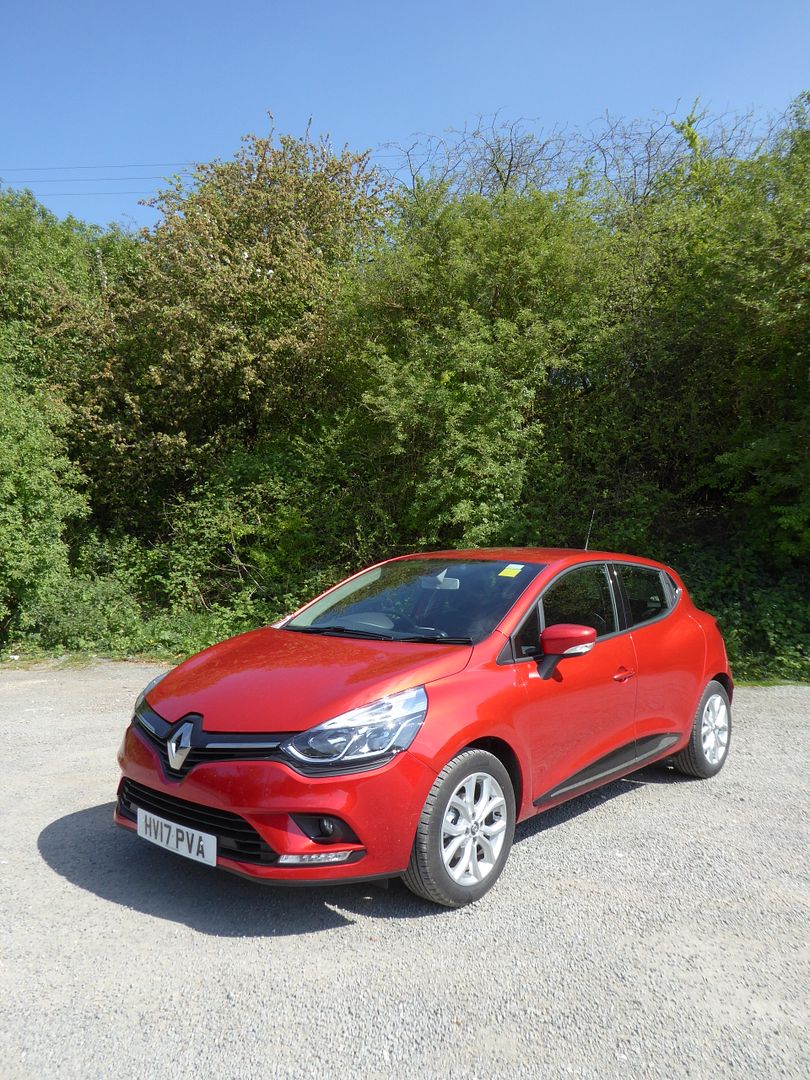

There was no badging on the outside of the test car to indicate either the trim level, or the engine. With no sticker on the fuel flap, or reminder on the instrument binnacle, as you usually get with diesel powered cars, it was likely that this was a petrol. Having studied other Clios (yes, sad, I know!) I know now that the absence of a badge is actually only a feature of the entry level 1.2 petrol cars, as those with the smaller but more potent three cylinder 0.9 litre Turbo get a TCe badge on the lower right of the tailgate and the diesel cars get a DCi one. In fact, there is a sticker inside the car in the driver’s door jamb, which confirms what I had worked out. This car had the 16 valve 75 bhp engine, coupled to a five speed manual transmission. Modern non-turbo petrol engines are often a disappointment, and this one most certainly is. Slow does not begin to describe things. First you have to start it. There is keyless starting, meaning that the massive flat “key”, with form factor significantly larger than a fat credit card, can stay in your pocket, as you reach for the Start button which is mounted down low in the centre of dash, in a frankly rather awkward position. At idle the engine is extremely quiet, such that in traffic, I sometimes fell to wondering if there is a Stop/Start system. There is not. However, that is the only time the engine is quiet, as once you get underway, it is anything but. First gear is very short, so only good for getting moving, and then you need to use the rest of the ratios a lot to maintain even modest progress. And modest is what it will be, as this engine feels like it has been seriously strangled. My notes record phrases like “gutless” and “where is the torque”, as well as noting that you would be unlikely to get done for breaking the speed limit. Actually, if you do cross any limits, the car beeps reproachfully at you. The gearchange is quite positive, if a bit clunky in operation. More than once, I found myself reaching for the lever to come from fifth to a non-existent sixth. which could have been disastrous, as reverse is located opposite fifth gear. On the motorway, you will be desperate for that extra and absent ratio, in a fond hope that it might reduce some of the noise. Though I dread to think how limited the acceleration would be, had one been fitted. At 70 mph, in fifth, the engine is spinning at around 3700rpm. Not that engine noise is the only culprit, as there is also some road roar and plenty of wind whistle. Motorway journeys are not ones to relish in this car, for reasons of noise alone. Not that travel on lesser roads will be any more enjoyable. You do have to work the car hard to keep up with the flow of traffic. The gearchange indicator is not quite as optimistic as the one in the Renault Kadjar that I sampled a couple of weeks earlier, perhaps recognising the lack of low-down torque, but even so, it suggests changing up somewhere around 2000rpm. If you do, then acceleration will come in the leisurely category. If you rev the engine harder, you will get a bit more out of it, as well as plenty more noise. Truly this is not an engine for anyone who cares about anything really. It does seem to deliver at the fuel pump, though. I drove the Clio 510 miles during a week’s tenure and needed to put 51.85 litres in it so I could return it full. That computes to 44.6 mpg, which is a decent return for a petrol-engined car that had to do most of its test miles at that high revving motorway speed.
If the engine does not inspire any enthusiasm, then nor, sadly, will the other driving dynamics. The steering is the real culprit here. There’s very little feel to it no matter where the wheel is, with plenty of vague and slop around the straight ahead only getting slightly less disconnected feeling as you turn on the lock. The wheel is leather-wrapped, so at least it is pleasant to hold, but it is what happens at the other end that is the disappointment. Not surprisingly, the handling is not going to get any enthusiast at all worked up, either. Whilst body roll is better controlled than used to be the case with many a French cars, there is understeer galore, so if you should try to tackle a bend with some gusto – and given the lack of power that’s both a relative term and relatively unlikely – then you will find that whilst the Clio will go round the corner, it is not tidy, or fun. What it does do, though, on the standard 16″ wheels, is ride quite nicely. I guess you could say that this is because ride qualities have always been high on the priority list for French cars, and on the evidence of this Clio, they still are. The brake pedal felt rather mushy in the first part of its travel, though as you push harder, there is plenty of stopping power available after all. A conventional pull-up handbrake is fitted between the seats. The Clio proved quite easy to position on the road and to manoeuvre. There are quite thick C pillars, but despite this, visibility is good, with a generous field of view from the door mirrors. Whilst you cannot tell exactly where the front of the car stops, the rear is easier to judge thanks to the rather upright hatch rear-end. One thing really did irritate me. Get out of the car, with that massive key in your pocket, and once you step more than about 50cm away from it, the car locks. Every time. The Kadjar I drove did the same. Whilst there are circumstances when this would be useful – such as if you are genuinely leaving the car – there are others when it is plain irksome.
The disappointments continue inside. I was pleased to find that two of the things which irritated me in the last Clio I drove had been solved with this car. That car suffered from terrible reflections from all manner of items of the trim in the windscreen and side windows, and whilst there were small reflections in the lower part of the screen from the top of the dash, the issue was far less extreme and one you could live with now. The other was the leather-wrapped gearlever which had stitching so rough that it literally irritated my hand just holding it. A completely different gearlever top on this one addressed that issue. Sadly, though, little else has changed. The plastics are particularly cheap and hollow sounding, especially the ones on the door casings that were among the nastiest I have come across for quite a while. Those on the dash are little better. There were also creaks and rattles from at least three different places in the cabin, even though this car was only a few weeks old, suggesting that build quality is still not Renault’s priority. The upper surface of the dash has a slightly stippled texture, whilst the lower part is plain black and there are gloss black inlays around the unit in the centre of the dash. Befitting its status near the bottom of the range, the instrument layout is quite simple. The displays are digital, and are housed in a sort of squashed figure of 8 on its side, with a rev counter on the left and a large fuel gauge on the right. A flattened ellipse through the middle of these contains the digital speedometer. They all proved easy to read at a glance. The centre of the dash contains a large element which does not sit flush at its upper part, as the dash moulding is angled more steeply, leaving an awkward gap. Uppermost in this feature is the display screen for the infotainment system. This uses Renault’s R-Link, and presents its information and capabilities in a touch-sensitive colour screen. Features include the radio, media connections (ie MP3, Bluetooth and AUX), a series of car settings, an Eco Assessment tool and Navigation. It proved quite easy to use, which is just as well, as the residual audio controls are limited to an on/off and volume knob to the right. There is a repeater pod on the lower right behind the steering wheel for some other functions, but otherwise you will need to use the screen. There were two features which were only active when you were showing the Navigation screen which you may think helpful, or you find irk you. One is an audible warning every time you exceed what the system thinks is the speed limit – useful at times, but irksome when you hit 72 mph on the motorway. The second was around speed cameras. This certainly should be useful, though the constant beeps as you go around the M25 or down the M42 where they are on every gantry is a bit wearing, and there were plenty of places where the system reported a non-existent camera – I guess these are spots where either there used to be one, or where mobile ones sometimes operate. The Eco Assessment was as in the Kadjar, giving you an overall score, based on its view of when you change gear (get to high gears more quickly, was what it told me!), smoothness and anticipation (where I scored much more highly). I am not sure how helpful it really is. Below this unit are the controls for the air conditioning, three simple rotary dials to select temperature, fan speed and direction of air flow. That’s all there is in the centre of the dash. Lights operate from the left hand column stalk, and there is a single one on the right for front and rear wipers. There was no flick wipe, which was something that would have been useful. There were buttons on the steering wheel spokes, a single one on the left and a pair on the right. I never figured out what they did, and the symbols were non-obvious, but they looked like they could have been for a cruise control. The overall layout is simple, and were it not for the low-rent quality, would seem perfectly acceptable for a car of this price. At least the sharp edges to the mouldings that afflicted the early Clio 4 models appeared to have been solved.
Getting comfortable was not difficult. All adjustments are manual, of course, as you would expect for a car of this price, with a bar under the seat for fore/aft and a turn wheel to alter the backrest rake as well as ratchet type lever for seat height. There is a telescoping steering wheel, which goes in/out and up/down. I easily found the right positioning, at which point I had a good driving position. The seat, trimmed in a hard-wearing cloth in various shades of black, proved comfortable when sat on it for a couple of hours. This Clio is one of the largest cars in the class, noticeably bigger than its predecessor, and that has freed up that bit more space for rear seat passengers. Only when the front seats are set as far back as they will go, will legroom be in short supply, but with a more accommodating positioning, there is sufficient space for adults to sit here. The Clio is not really wide enough for three adults to feel comfortable, but children would certainly fit. Headroom is not an issue. One minor irritation was the fact that the third rear seat belt was suspended from the roof, which got in the way when you folded the rear seats and was also visible when you looked behind you, such as when reversing.
The boot is also a good size for this class of car. The floor is somewhat lower than the base of the tailgate, but this does mean that the available space is unusually deep for a small car. If you want more space, the rear seat backrests are asymmetrically split, and simply drop down onto the rear seat cushions, though this means that the extra load area is stepped up from the rest of the boot. It does give the Clio plenty of cargo space, though. Inside the cabin, there is a glove box which has a large surface area to the lid but which proves particularly meagre when you open it, but there is a lipped open shelf area above it. There are door bins and there is a useful area in front of the gearlever for odds and ends as well as a pair of cup holders in the centre console.
There is an Estate version of the Clio that is sold in European markets, but this is not offered in the UK, which means that all Clio 4 models are 5 door hatchbacks. Top of the range is the rather special RenaultSport Clio RS200 model. The rest of the range requires you simply to choose engine, transmission and trim, before delving into the options listings. There are three petrols: the 75 bhp 1.2 litre 16 valve of the test car and the more potent 90 bhp 0.9 Turbo unit and 120 bhp 1.1 motor. Diesels are all powered by the familiar 1.5 DCi engine, which is offered with either 90 bhp or 110 bhp. Selected versions are available with an automatic gearbox. The 1.2 unit is there to provide a cheap entry price, but with a CO2 rating of 127, as opposed to 105 of the 0.9 TCe, or 94 of the special ECO-optimised version of that engine, and official fuel consumption figures that are between 10 and 20 mpg worse, it is clear that Renault would hope buyers would opt for the more modern unit. There are 5 different trim levels available in the UK. Start point is the Play, which costs from £12,225. Key features on this model are a height adjuster for the driver’s seat, Hill Start Assist and Cruise Control with a speed limiter. Interior trim is in Dark carbon, and you also get the gearshift indicator, electric front windows, a DAB radio, height adjustable seat belts and keyless entry with push button starting but a quite a lot of the features you might think you can’t live without are missing from this spec which is clearly there to provide a low entry price point. Next up is the Expression, listing from £13,775, which adds 16″ alloys, front fog lights and air conditioning and variable speed wipers as well as what Renault call “Smart Engine Management”. The Dynamique Nav costs a further £1000, for which you also get the 7″ colour touch sensitive R-Link system with Arkamys sound system, DAB radio, Bluetooth and Media Navigation with Traffic reports, keyless entry and starting and auto headlights and wipers, as well as upgraded Design interior cloth trim for the seats, a leather-wrapped steering wheel, one-touch electric front windows, heated door mirrors, low rolling resistance tyres and an emergency spare wheel as opposed to a tyre inflation kit. There is also a Dynamique S Nav, from £16,555 which further adds 17″ alloys, automated climate control and rear parking sensors, leather inserts to the cloth seats, electric rear windows, a front armrest, LED headlights and chrome window surrounds. The top of the non-sporting range is the Signature Nav, from £18,005, whose spec also includes front, side and rear parking sensors, automated parking and part leather, part synthetic GT sports front seats with seat heating, a height adjuster for the front passenger seat and an upgraded sounds system with 3D sound. Not all trims are available with all engines, as you would expect.
Overall, I was not impressed by this Clio. Whilst noting that it is roomy, and comfortable, the low rent interior is a disappointment which might be acceptable if the car was OK to drive. But in this form, it just is not. For sure, it is easy to drive, with that light steering and feeling of manoeuverability, but the gutless engine and the high noise levels are drawbacks that I just could not accept. Even at this price point, there are plenty of rivals which do better. So, whilst the market may buy this car in quantity, preferring it to the Fiesta, Polo, Fabia, Corsa and a whole array of other superminis, I just don’t agree with all those people who choose one in favour of something else. My conclusion when I sampled the diesel model within days of driving the elderly and now very elderly Fiat Punto was that even that car, vilified by the press these days, was preferable. Two years later, I have not changed my mind.





























































